#nation-building
Explore tagged Tumblr posts
Text
Singapore's History and Heritage: A Walk Through Time
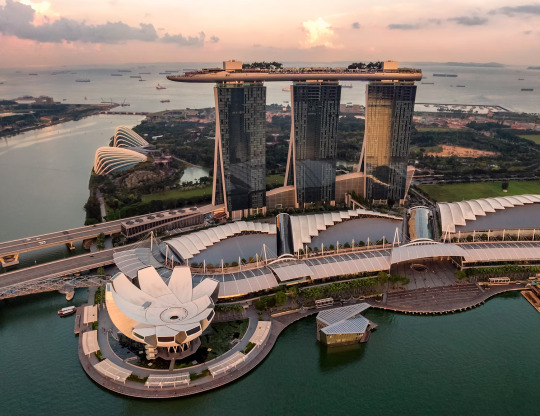
Nestled at the crossroads of Southeast Asia, Singapore is a city-state with a rich tapestry of history and cultural heritage that dates back centuries. From its humble beginnings as a fishing village to becoming a global economic powerhouse, Singapore has undergone a remarkable transformation. Today, the city-state stands as a testament to the harmonious coexistence of tradition and modernity. While exploring the key milestones that have shaped Singapore's history and heritage, visitors can also indulge in various things to do in Pai and experience the vibrant scene of shopping in Thailand.
Early Days: A Fishing Village to a Trading Hub
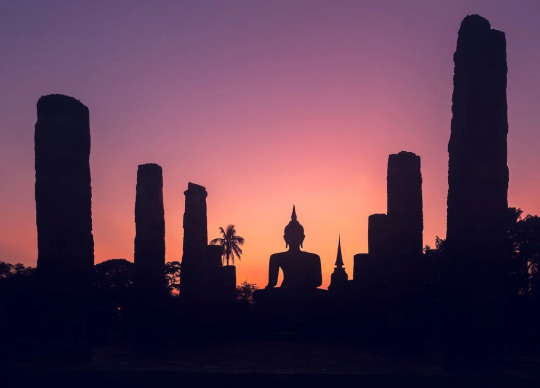
Singapore's story begins in the 14th century when it was a mere fishing village known as Temasek. It wasn't until the arrival of Sang Nila Utama, a Sumatran prince, in the 13th century that the island gained prominence. The prince renamed the island "Singapura," which means "Lion City" in Sanskrit after he allegedly spotted a lion on its shores. Although lions never roamed the island, the name stuck, symbolizing strength and courage.
In the 19th century, Singapore's strategic location at the crossroads of major shipping routes attracted the attention of European powers. Sir Stamford Raffles, the founder of modern Singapore, established a British trading post in 1819. This marked the beginning of Singapore's rapid ascent as a crucial trading hub in the region.
Colonial Era and World War II:
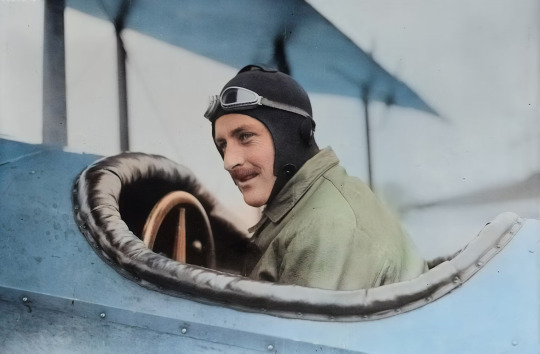
Under British colonial rule, Singapore flourished economically, becoming a melting pot of cultures due to its strategic location and open trade policies. However, the prosperity was interrupted during World War II when the Japanese occupied Singapore from 1942 to 1945. The war left an indelible mark on the island, with the Battle of Singapore being a pivotal moment in its history. After the war, Singapore went through a period of recovery and reconstruction.
Independence and Nation-Building:
The desire for self-governance gained momentum in the post-war era, leading to the formation of the People's Action Party (PAP) in 1954. Led by Lee Kuan Yew, the PAP advocated for independence from British rule and social reforms. Singapore achieved self-governance in 1959 and joined the Federation of Malaysia in 1963. However, the union was short-lived, and Singapore gained full independence on August 9, 1965, due to political differences with Malaysia.
Lee Kuan Yew became the first Prime Minister of Singapore and embarked on a nation-building journey characterized by economic development, social cohesion, and multiracial harmony. The transformation was remarkable, turning Singapore from a developing nation into a first-world city-state within a single generation.
Cultural Diversity: Harmony in Diversity

One of the defining features of Singapore is its multicultural society. The island is a mosaic of different ethnicities, including Chinese, Malay, Indian, and various other communities. This diversity is not only evident in the population but also in the architecture, cuisine, and traditions that permeate the city.
Chinatown, Little India, and Kampong Glam are iconic districts that showcase the cultural richness of their respective communities. Visitors can explore the vibrant markets, temples, mosques, and churches, experiencing firsthand the harmonious coexistence of different faiths and traditions. The annual celebrations of festivals such as Chinese New Year, Deepavali, Hari Raya Puasa, and Christmas further highlight the multicultural tapestry of Singapore.
Preserving Heritage: Museums and Historic Sites

To truly understand Singapore's history and heritage, a visit to its museums and historic sites is essential. The National Museum of Singapore provides a comprehensive overview of the island's past through interactive exhibits and artifacts. Fort Canning Park, with its archaeological sites and lush greenery, offers a glimpse into Singapore's colonial history.
Changi Chapel and Museum pay homage to the prisoners of war during World War II, while the Peranakan Museum celebrates the unique Peranakan culture, born from the intermingling of Chinese and Malay influences. These sites not only preserve the historical significance but also serve as educational platforms for future generations.
Modern Singapore: A Global City-State

In the latter half of the 20th century, Singapore transitioned from a trading post to a global economic powerhouse. Its commitment to education, innovation, and infrastructure development propelled the nation into the ranks of the world's most developed countries. The skyline of Singapore reflects its modernity, with iconic structures like the Marina Bay Sands and Gardens by the Bay becoming symbols of the city-state's progress.
Conclusion:
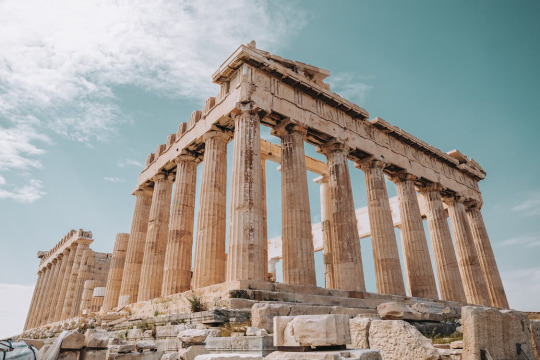
Singapore's history and heritage are intertwined with resilience, diversity, and a forward-looking spirit. As visitors traverse the city-state, they embark on a journey through time, witnessing the transformation from a humble fishing village to a global metropolis. Singapore's ability to preserve its cultural roots while embracing progress serves as an inspiration for nations worldwide. A walk through the Lion City is not just a stroll through its bustling streets but a fascinating exploration of a nation's evolution, where history and heritage seamlessly coalesce.
#Singapore History#Cultural Heritage#Lion City#Southeast Asian History#Colonial Era#Independence#Nation-Building#Multicultural Society#Chinatown#Little India#Kampong Glam#Museums in Singapore#National Museum#Fort Canning Park#World War II History#Changi Chapel and Museum#Peranakan Culture#Modern Singapore#Global City-State#Marina Bay Sands
2 notes
·
View notes
Text
शानदार आज़ादी: बांग्लादेश मुक्ति संग्राम विजय दिवस (16-दिसम्बर-1971)
Written By Shafeek Ahmad, Published On 16-December-2023. इतिहास की पवित्र प्रतिध्वनि में, 16 दिसंबर, 1971, बांग्लादेश की सामूहिक स्मृति में अंकित दिन के रूप में अंकित है। यह वह दिन है जब उत्��ीड़न की बेड़ियाँ टूट गईं और एक राष्ट्र स्वतंत्रता की रोशनी में उभरा, जो बांग्लादेश मुक्ति युद्ध की परिणति का प्रतीक था। जैसे ही सूरज क्षितिज पर आया, हवा में प्रत्याशा क�� स्पष्ट भावना व्याप्त हो गई।…

View On WordPress
#1971#Bangladesh Liberation War#December 16#Democracy#Freedom#Heritage#Independence#Nation-building#Resilience#Sacrifice#Victory Day
2 notes
·
View notes
Text
“Our torogan was first built some 260 years ago with the founding of the agama (community) of Dayawan and the installation of the first Sultan of Dayawan. The prestige of this royal house has grown beyond the boundaries of the community. Together with the royal houses of Marawi, Marantao, Guimba, and Madaya, Dayawan is a “keeper” of the House of Lanao. This means that the Sultan of Lanao must belong to the major descent lines of these communities.
Members of this historical royal house led the defense of Marawi against the Spanish in 1891 and 1895. During the American Occupation, Dayawan was very active. In 1935, it was one of the royal houses that hosted the signing of the so-called Dansalan or Marawi Declaration, which was submitted to the US Congress and President. In this declaration, the Maranao datus expressed their desire to maintain independence from Manila. The datus declared that they would rather ‘drown in the lake’ than allow Lanao (and the rest of Mindanao) to be included in the coming Philippine statehood.”
Excerpt from “Torogan, the Mranao royal house” by Jamal Ashley Abbas (August 10, 2018)
#philippines#statehood#southeast asia#mindanao#maranao#nation-building#barmm#sovereign nation#sovereignty#x
5 notes
·
View notes
Text

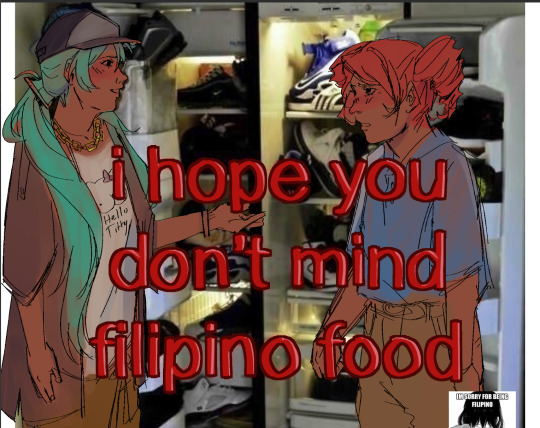
UY! PHILIPPINES!!!! PHILIPPINES!!!!
#hatsune miku#kasane teto#vocaloid#miku hatsune#cloudy draws#my art#art#fanart#digital art#vocaloid fanart#vocaloid art#miku#ty brazilian miku artists for inspiring me i loved doing this#however it is half assed i have building due tomorrow#but this was good stress relief i thank you miku#swagapino miku we love you they will never make me hate you#miku is national been loving all the art ive been seeing recently
18K notes
·
View notes
Text
Jamshedpur to Host Seminar on Youth's Role in Nation-Building on September 11
Swami Vivekananda Vyakhyanmala Committee to organize a seminar on ‘Role of Youth in Nation-Building’ at Sonari Chitragupta Bhavan on September 11. Key Points: – Seminar on youth’s role in nation-building on September 11. – Event to be held at Sonari Chitragupta Bhavan, Jamshedpur. – Focus on youth empowerment, self-reliance, and Indian culture. JAMSHEDPUR – A seminar titled ‘Role of Youth in…
#आयोजन#Chicago Day#Event#Indian culture#Jamshedpur#nation-building#Seminar#Sonari Chitragupta Bhavan#Swami Vivekananda#youth empowerment
0 notes
Text
Empowering India's Youth: Insights from Viksit Bharat Yatra and Youth for Quality Bharat Festival #ViksitBharatYatra #YouthForQualityBharat #YQBF #QCI
Empowering India's Youth: Insights from Viksit Bharat Yatra and Youth for Quality Bharat Festival #ViksitBharatYatra #YouthForQualityBharat #YQBF #QCI #EmpoweringYouth #QualityBharatMission #IndiaVision2047
Viksit Bharat Yatra is a nationwide campaign launched by Prime Minister Narendra Modi on November 15, 2023, from Khunti, Jharkhand. The purpose of the campaign is to raise awareness and track the implementation of various central schemes, such as Ayushman Bharat, Ujjwala Yojana, PM Suraksha Bima, PM SVANidhi, and more. The campaign aims to reach out to the vulnerable population, spread…

View On WordPress
#Development Initiatives#Empowering Youth#India&039;s Vision 2047#Nation-building#Prime Minister Narendra Modi#Quality Bharat @100 Mission#Quality Council of India#Viksit Bharat Yatra#Youth for Quality Bharat Festival
0 notes
Text

hilarious man (The National Play “Sorrow” for Six Hours at MoMA PS1)
#that old man forever. if you want my opinion#the national#thing#did you know the whole thing is online. on youtube even. hour 5 minute 40 if you want to hear the one where he cried#and the energy does build up on hour 5. cant believe i was too busy being 14 and from a different continent to go to this shit
5K notes
·
View notes
Text
Pan-Slavism
'Continued tension between regime and educated society stimulated the appearance of the first independent public movement with an agenda which concerned both foreign policy and, even more deeply, the nature of Russia as a state and a community. Especially strong among the wealthy and educated member of Moscow society, the Pan-Slavs were inspired by the example of Germany to hope that Russia could both renew its national identity and strengthen its standing in Europe by sponsoring nation-building among the Slav and Orthodox peoples of central and southeastern Europe.'
Russia and the Russians, by Geoffrey Hosking
0 notes
Text

📍Austrian National Library, Vienna, Austria
#dark academia#light academia#classical#academia aesthetic#escapism#academia#books and libraries#classic literature#books#architecture#interior#place#Austrian National Library#Vienna#Austria#travel#design#old#building#historical#royal core#cottage core#aesthetic#academic#mood#vibe#tumblr#beautiful
4K notes
·
View notes
Text







why are you as a man smiling like that at your temporary teammate who the nhl ships you with....
#i can't read lips but i know sid is telling nate he can put it in bare tonight.#they were so flirty and giggly and at one point (that i could see - i was sitting behind someone with a really tall beanie sjdh)#sid almost sat in nate's lap while he was backing it up and trying blindly to sit down while yapping at one of the staff#also blessedly while on one side was my very perplexed colleague#on my other side was a stranger who turned out to be a fujoshi because at one point she was telling her friend: bonded pair#and i turned to her and was like: SIDNATE?????#and she was like: YEAH?????#my colleague sighing: you're thinking about men kissing again...... aren't you.....#anyway i have a new friend in boston now yaoi really does build bridges#sidney crosby#pittsburgh penguins#nathan mackinnon#colorado avalanche#sidnate#team canada#4 nations face off#shhhhh ignore the quality ;____;#nhl#hockey
1K notes
·
View notes
Text
Information and Media Literacy as a tool for Civic Responsibility and Nation-building
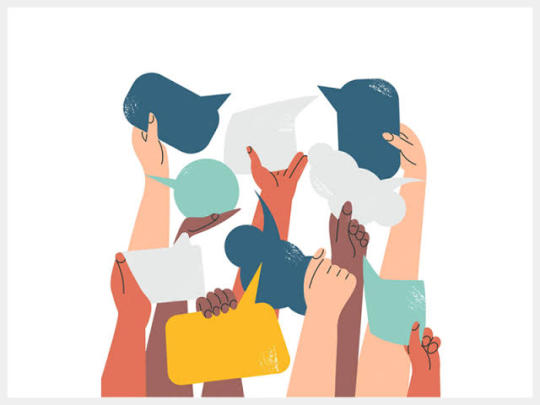
"In the age of information, ignorance is a choice." These profound words by renowned author and educator Donny Miller encapsulate the heart of our digital era. In a world where knowledge is at our fingertips and information flows ceaselessly through the channels of the internet, the consequences of ignorance are more evident than ever before. Media and Information Literacy (MIL) emerged as a beacon that guides us through this complex world of information, enabling us to make informed choices, take up our civic responsibilities, and contribute to nation-building.
Every day, we are bombarded with an avalanche of news, opinions, and data. Yet, as German writer, poet, and philosopher Johann Wolfgang von Goethe noted, "Knowing is not enough; we must apply. Willing is not enough; we must do." It's not enough to merely absorb information; we must apply our critical thinking skills to determine its authenticity and importance. In an age where misinformation and fake news escalate, MIL equips us with the tools to discern fact from fiction, to question the sources and biases present in the information we consume, and to assess the credibility of those who provide it.
MIL goes beyond empowering individuals; it emphasizes shared responsibility. As the African proverb says, "If you want to go quickly, go alone. If you want to go far, go together." MIL encourages us to work together in the pursuit of truth and accuracy. This helps bring people closer and makes our society stronger.
Media has truly made a big contribution to people's life specially nowadays; during 21st Century Period (currently). With the use of this, it became a way for the people to express themselves, to give their opinion, and to be informed with the arising issues or trends. Therefore, the world of media is now enormous. In addition, as time flies, many more types of media are being invented. The most arising type of media is the social media. Social Media has many branches: such as, the famous - Facebook, Twitter, Instagram, Messenger, Telegram, etc., which people frequently used. With these social media platforms, people can express themselves freely, they can share their opinions and connect with their friends, loved ones, family and other people. However, as an advantage of media to society; as media connects people, this will also serve as a way on building the nation, where people will have unity.
Civic responsibility and nation building are two crucial aspects that contribute to the development and progress of a country. It is the recognition that we are not just individuals living in isolation, but members of a larger community with shared goals and aspirations. By working together towards common goals, citizens build strong and resilient communities that can withstand challenges and promote the well-being of all its members. A nation cannot thrive if there is widespread inequality and injustice. It is the responsibility of every citizen to work towards creating a society that is fair and just for all.
How can we, as media and information literates, help our community foster a sense of civic responsibility? As students and good citizens, we will properly apply our knowledge first in ourselves. As the saying goes, “If you want to see change, start with yourself first.” One of the best things to do is to inform them of the advantages of media and information literacy development. To persuade individuals to use media and information in a responsible manner, demonstrate to them the proper way to do so. We'll use the media to improve our country and make it a better place.Because we are media literate, we can enlighten others and spread the word about the laws set forth by our government. With this, we are able to behave responsibly as civil citizens and contribute to our community in the most effective way possible.
We can all make a difference in our communities and in our country by just being literate and using the information the media provides, but we must infuse in ourselves the idea that great learning comes with tremendous responsibility. We must remember that knowing how to use media and information effectively does not suffice; we also need to know how to do so in an ethical and proper way. To genuinely develop our country, we need to use media literacy, information literacy, and awareness of what is happening in our society.
The employment of media and information literacy as a tool for civic responsibility and nation-building is highly effective. Citizens' use of technology makes their jobs easier. Because we rely on technology so frequently nowadays, we are all aware that practically everyone uses it. We as students may contribute to the advancement of our nation by stressing to everyone in our community that media is not just limited to television. Another great approach to advance the nation would be to teach the people how to handle the media and information.
Overall, there are significant relations between information and the media. Undoubtedly, effective use of it will result in a better world. The world deserves us as individuals if we can successfully employ media, information, and technology. So, all we have to do is to be united and become media and information literate. Our lives will become more meaningful if we have an impact on other people's lives. As Marian Wright Edelman says, "Service is what life is all about."
1 note
·
View note
Text
A. P. J. Abdul Kalam -The Extraordinary Journey
Discover the extraordinary journey of A. P. J. Abdul Kalam, the renowned scientist, educator, and former President of India. Join us as we delve into the life and achievements of the Missile Man of India, who played a pivotal role in shaping the nation's space and defense programs. Explore his inspiring leadership, unwavering dedication to education, and timeless legacy that continues to inspire generations. Get ready to be inspired by his words, 'Dream, dream, dream. Dreams transform into thoughts and thoughts result in action.' Watch now and be part of the incredible story of Abdul Kalam, a visionary, leader, and national icon. #AbdulKalam #Inspiration #DreamBig
APJAbdulKalam #AbdulKalam #MissileManOfIndia #Inspiration #DreamBig #Leadership #Education #Science #Technology #YouthEmpowerment #IndianHero #Motivation #NationBuilder #Legacy #Visionary #Innovation #PresidentOfIndia #SpaceProgram #AerospaceEngineering #Rameswaram #DreamsTransform #RoleModel #SuccessStory #InspiringQuotes #IndianIcon
youtube
#Abdul Kalam#A. P. J. Abdul Kalam#Missile Man of India#President of India#Indian scientist#Inspirational leader#Education advocate#Aerospace engineering#Space and defense programs#Youth empowerment#Visionary#Dream big#Motivational speaker#Nation-building#Legacy#Inspiration#Scientific achievements#Education reform#Leadership qualities#Indian icon#Rameswaram#Indian President#Scientific innovation#India's space program#India's defense advancements#Quotes by Abdul Kalam#Youth motivation#Role model#Achievements and contributions#Inspirational speeches
0 notes
Text

a lil guy. a lil dude. it’s 2025 and here I am castiel posting we are not discussing it - it’s happening
#castiel#castiel art#supernatural#spn#castiel supernatural#where’s the gif from the og jumanji of Robin screaming WHAT YEAR IS IT#I have missed this dork tho he’s such a lil guy a Chrysler building sized lil guy#anyway hello spn nation how are we in 2025 what’s happening what’s good#it has been *checks watch* Three Years since I touched base with u all#also is something going on bc there’s been a lot of my spn posts getting notes again and YouTube has been pushing spn at me#what?? is happening?? in the spn shaped sphere
797 notes
·
View notes
Text

this manga gave me an existential crisis. recommend
#blue period#yaguchi yatora#takahashi yotasuke#hashida haruka#fanart#the agonies. you know <- is an artist#also i read it while i was in japan in october n when they went to the national museum of western art i was like WAIT.... I CAN GO THERE TO#(its also a corb building so i got to see some cool architecture as well)#really good collection. i sketched some of the sculptures it was v fun
857 notes
·
View notes
Text
Sir Dorabji Tata: The visionary who shaped modern India
Sir Dorabji Tata, a true nation-builder, transformed India’s industrial landscape with his dedication and vision. Sir Dorabji Tata’s legacy as a pioneer of India’s industrial and social development continues to inspire generations. While history remembers the glittering names of public figures, the quiet dedication of individuals who work behind the scenes often goes unnoticed. One such…
#फोकस#India industrialisation#Indian Institute of Science#Indian Olympic team#Jamshedpur history#nation-building#Sir Dorabji Tata#spotlight#Tata philanthropy#Tata Power#Tata Steel history#Tata Trusts
0 notes